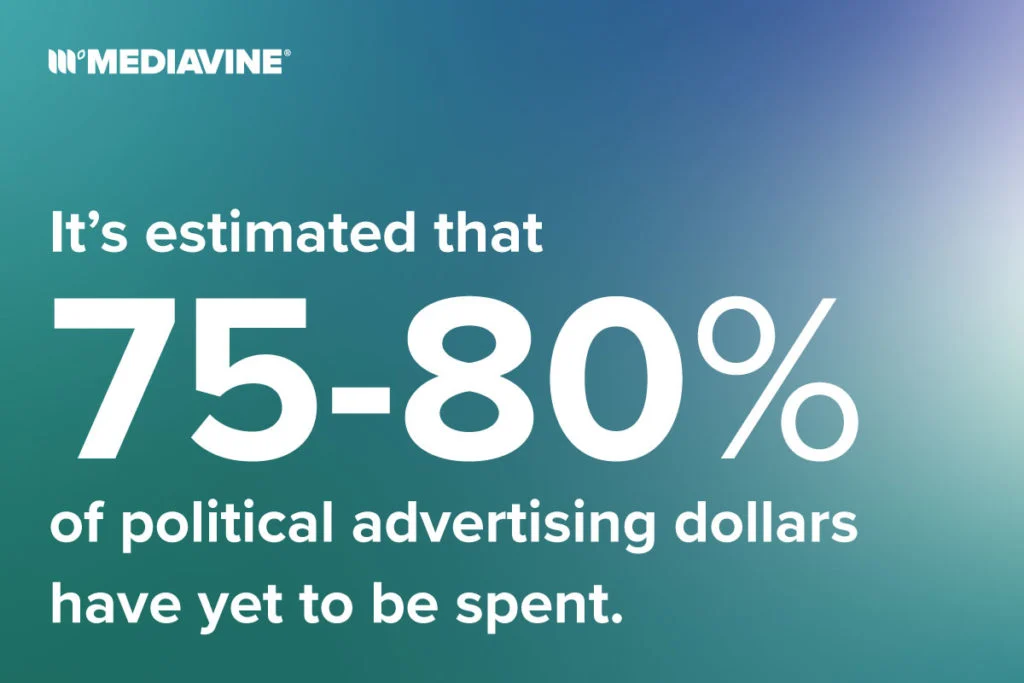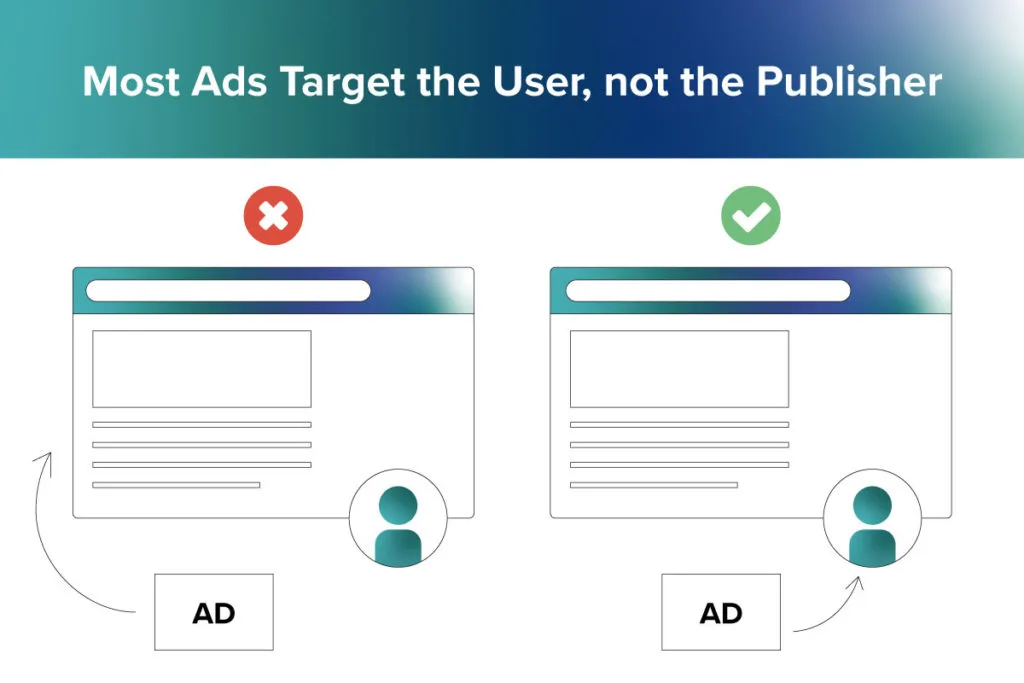Behind the Numbers With Brad: Political Advertising in 2024


“Let’s talk about politics.”
We know. This is a phrase absolutely no one wants to hear uttered around the dinner table or backyard barbecue these days. But hear us out.
As the 2024 election creeps closer, it feels like you can’t escape it. Social media, billboards, bumper stickers, TV — and yes, our desktop and mobile devices.
We’re here to talk about the latter and your options as a Mediavine publisher.
Every election year is unique, but this one has proven especially so.
According to The Current, a publication owned and operated by The Trade Desk (one of Mediavine’s largest advertising partners), political ad spend is projected to reach $12.3 billion this year, with nearly $4 billion going to digital advertising.
That’s up 156% compared to the last election.
What’s unusual is that in previous presidential election years, a large chunk of this would have been spent during competitive primaries. Not in 2024.
This year’s major party candidates either emerged victorious early in the process or weren’t seriously challenged at all, meaning the vast majority of potential ad spend is still available, waiting to be deployed by November 4.
The buzz among large political buyers is that it’s estimated that 75-80% of political advertising dollars have yet to be spent, with the vast majority of spending likely to happen between the beginning of September and election day.

Beyond the presidential race, there are U.S. Senate and Congressional elections as well as state, city and local elections and referendums happening all around the US. All of these will have some amount of budget to push their candidate or cause.
Here’s what publishers need to know about earning some of that digital ad revenue, as well as some frequently asked questions about the political advertising world:
“So there’s a ton of money on the table. How can I know what kind of political ads or which political party will show on my site?”
Mediavine offers the ability to opt-in or out of political ads. However, that opt-out only covers political ads in general; there is no way to guarantee that only a specific political party or candidate’s ads will or will not show up on your website.
Even if the option existed to send a signal to advertisers that you prefer one candidate over another, that signal would more than likely be used by the spender in an attempt to change minds, not respecting your wishes.
“How are political ads targeted?”
The most common form of targeting in the political realm is via a voter file, typically obtained through a political data provider. In simpler words, there are firms that specifically collect and sell publicly available voter data for use in targeted buys.
Another strategy is based on location, or “geotargeting.” Simply knowing where a person lives is a major piece of data for certain campaigns, for obvious reasons.
Buyers also use data segments based on behavioral characteristics or contextual behavior. For example, based on browsing behavior and content you’ve been consuming, a person may have been identified as a mom of young children and/or a video game player.
If a candidate sees that he or she is polling low with a particular demographic, that user may be hit with a few extra impressions as a result.
“I got a report from a user that ads for Candidate X are showing up on my site. I don’t want my readers to think I support that candidate.”
Here’s the big one.
Remember — as with all things programmatic advertising — most ads that are shown on page are a reflection of the user, not the publisher.

The end user, or consumer, is the person targeted with ads for shoes because they were the one searching for that new pair of shoes.
Political advertising is no different; if a user sees an ad for a specific candidate, it’s likely that candidate’s campaign has identified that user as a good audience for it.
“As a Mediavine publisher, how do I opt in?”
This is the simple part! The opt-in for political advertising lives in your Mediavine Dashboard under Settings > Opt Out.
These settings can be changed at any time; any changes made give immediate notification to any buyers of your opt-in and opt-out choices.
“How much of an RPM increase can I expect from opting in?”
Unfortunately, there are no historical statistics to help us predict exactly what sort of RPM increases one can expect from opting into political ads.
Looking back at the 2020 election, we saw average CPM increases of around 8% for those publishers who opted into political advertising.
Past performance does not guarantee future returns, especially these days. But remember how I said earlier in the post that the overall ad dollars are expected to be up 156% over 2020, and that so much of it has yet to be spent?
Odds are good that CPMs will be higher than the previous cycle as well, and any time we see higher CPMs, we see more pressure on the auction. More pressure on the auction makes all buyers bid higher, and higher RPMs follow as a result.
This will vary by site and by audience, like any other ad campaigns. Whatever the increase ends up being, if you’ve opted out, you won’t be in position to take advantage.
“If you’ve opted out, you won’t be in position to take advantage.”
In a time of uncertainty regarding Google Search updates and third party cookie deprecation, it feels like the digital advertising industry is in a state of flux.
These are certainly interesting times, but the deluge of political advertising spend — in its many different forms — is guaranteed to happen this summer and fall.
Consider opting into this potential revenue boost in your Mediavine Dashboard today.
Stay up to date with the latest from Mediavine
As the digital advertising landscape evolves, the need for effective data management and compliance has never been more critical. As part of our commitment to providing exceptional solutions for our …
Welcome to the much-anticipated release of the fifth-annual edition of “The Best eCPM Days of the Year” calendar. Each year, we analyze historical trends to provide publishers with a graphical …
 Heather Tullos
Heather Tullos
The switch from Universal Analytics to GA4 is well underway, and as we all learn about these new metrics, adjust perspectives on how we measure success on our sites, and …